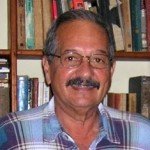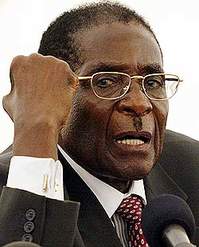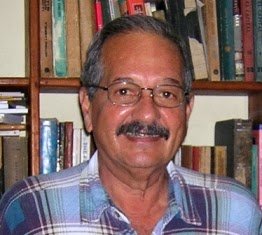Africa 2
Zimbabwe President Receives Cuban VP
A CubaNews translation. Edited by Walter Lippmann. Zimbabwean President Receives Cuban Vice President Inés María Chapman Havana, Sep 15 (ACN) Emmerson Mnangagwa, President of Zimbabwe received in Harare the Cuban Vice President Inés María Chapman, who led her country’s delegation to the funeral of Robert Mugabe, founding father of that African nation. During the meeting, the Zimbabwean president highlighted the solid relations between his country and Cuba, reports a Prensa Latina dispatch. Mugabe was honored this Saturday with an official ceremony at the National Stadium in Harare, attended by heads of state and government of the African continent and personalities from other regions of the world. Mnangagwa thanked Cuba for sending a high-level representation to pay tribute to the Zimbabwean independence leader and recalled that thousands of professionals from this southern African nation were trained on the Caribbean island. He stressed that the historical leader of the Cuban Revolution, Fidel Castro, and Mugabe were like brothers, and ratified the friendship between Zimbabwe and Cuba, and his intention to continue consolidating it. Inés María Chapman, Vice-President of the Councils of State and Ministers of Cuba, expressed her condolences on the death of the former president of Zimbabwe, on behalf of Army General Raúl Castro, first secretary of the Communist Party of Cuba, and President Miguel Díaz Canel Bermúdez. According to sources, the Cuban leader stressed Cuba’s willingness to continue developing and expanding bilateral relations, with emphasis on cooperation. In her words at the ceremony paying tribute to Mugabe, Chapman recalled that he was a dear friend of Cuba and Fidel Castro, and both shared countless moments ‘in the common struggle for the independence of our peoples and for the freedom and sovereignty of the African continent’. The vice-president stressed that her people had always been on Zimbabwe’s side in its struggle to achieve its definitive freedom from colonialism, which had a logical continuity after independence had been achieved ‘in the cooperation that we modestly offer to the construction of this nation’. In this regard, she revealed that about two thousand young Zimbabweans graduated in the most diverse specialties in Cuban universities. Hundreds of professionals from the island have passed through Zimbabwe to offer their knowledge, experience and thus contribute our grain of sand to the construction and development of this beautiful country. She also thanked that the Zimbabwean people and dear friend Mugabe were always on Cuba’s side “in our historic struggle against the economic, commercial and financial blockade imposed by the Government of the United States against our country and in all the battles that the Cuban people have had to fight in the last 60 years”. The Cuban leader stated that Cubans will always remember “with affection and gratitude the presence of Mugabe in the funeral honors of Commander in Chief Fidel Castro Ruz, when all our people and friends of Cuba bid him farewell”. Chapman arrived in Harare on Friday as head of a delegation, also composed of Marcos Rodriguez, director general of Political Planning at the Ministry of Foreign Affairs, and the ambassador of the Caribbean nation in this country, Carmelina Ramirez. The visitor was received at the capital’s airport by Zimbabwe’s Minister of Foreign Affairs and International Trade, Sibusiso Moyo.
Recibe Presidente de Zimbabwe a vicepresidenta cubana Inés María Chapman La Habana, 15 sep (ACN) Emmerson Mnangagwa, Presidente de Zimbabwe recibió en Harare a la vicepresidenta cubana Inés María Chapman, quien encabezó la delegación de su país a los funerales de Robert Mugabe, padre fundador de esa nación africana. Mugabe fue honrado este sábado con una ceremonia oficial en el Estadio Nacional de Harare, con asistencia de jefes de Estado y Gobierno del continente africano y personalidades de otras regiones del mundo. Mnangagwa agradeció a Cuba el envío de una representación de alto nivel para rendir tributo al líder de la independencia zimbabwense y recordó que en la isla caribeña se formaron miles de profesionales de esta nación de África Austral. Subrayó que el líder histórico de la Revolución cubana, Fidel Castro, y Mugabe eran como hermanos, y ratificó la amistad entre Zimbabwe y Cuba, y su intención de continuar consolidándola. Por su parte, la vicepresidenta de los consejos de Estado y de Ministros de Cuba Inés María Chapman transmitió las condolencias por el fallecimiento del expresidente de Zimbabwe del general de Ejército Raúl Castro, primer secretario del Partido Comunista de Cuba, y del presidente Miguel Díaz Canel Bermúdez. Según las fuentes, la dirigente cubana destacó la voluntad de Cuba de continuar desarrollando y ampliando las relaciones bilaterales, con énfasis en la cooperación. En sus palabras en la ceremonia de homenaje a Mugabe, Chapman recordó que fue un apreciado amigo de Cuba y de Fidel Castro, y ambos compartieron innumerables momentos ‘en la lucha común por la independencia de nuestros pueblos y por la libertad y soberanía del continente africano’. La vicepresidenta subrayó que su pueblo siempre estuvo al lado de Zimbabwe en su lucha por lograr su definitiva libertad del colonialismo, que tuvo una lógica continuidad después de lograda la independencia ‘en la cooperación que modestamente brindamos a la construcción de esta nación’. Al respecto reveló que cerca de dos mil jóvenes zimbabwenses se graduaron en las más diversas especialidades en las universidades cubanas y cientos de profesionales de la isla ‘han pasado por Zimbabwe para brindar sus conocimientos, experiencias y así aportar nuestro grano de arena a la construcción y desarrollo de este hermoso país’. Agradeció también que el pueblo zimbabwense y el querido amigo Mugabe estuvieron siempre al lado de Cuba ‘en nuestra histórica lucha contra el bloqueo económico, comercial y financiero impuesto por el Gobierno de Estados Unidos contra nuestro país y en todas las batallas que ha tenido que librar el pueblo cubano en los últimos 60 años’. La dirigente cubana manifestó que los cubanos siempre recordarán ‘con cariño y agradecimiento la presencia de Mugabe en las honras fúnebres del comandante en jefe Fidel Castro Ruz, cuando todo nuestro pueblo y los amigos de Cuba lo despedimos’. Chapman llegó el viernes a Harare al frente de una delegación, integrada también por Marcos Rodríguez, director general de Planeamiento Político del Ministerio de Relaciones Exteriores, y la embajadora de la nación caribeña en este país, Carmelina Ramírez. La visitante fue recibida en el aeropuerto capitalino por el ministro zimbabwense de Relaciones Exteriores y Comercio Internacional, Sibusiso Moyo.
Zimbabwean President Receives Cuban Vice President Inés María Chapman
cmb cmbRecibe Presidente de Zimbabwe a vicepresidenta cubana Inés María Chapman
En el encuentro el mandatario zimbabwense destacó las sólidas relaciones entre su país y Cuba, informa un despacho de Prensa Latina.
cmb cmb
Washington’s Best-Kept Secret in Africa
- English
- Español
Washington’s Best-Kept Secret in Africa

By Manuel E. Yepe
http://manuelyepe.wordpress.com/
A CubaNews translation.
Edited by Walter Lippmann.
In November 2015, Nick Turse, managing editor of TomDispatch.com and a fellow at the Nation Institute published his essay “The US’s Military Best-Kept Secret” that still raises eyebrows.
Turse has reported from the Middle East, Southeast Asia and Africa. His pieces have appeared in The New York Times, The Los Angeles Times, The Nation and regularly at TomDispatch. Turse’s New York Times bestseller Kill Anything That Moves: The Real American War in Vietnam received a 2014 American Book Award.
For years, the US military expansion in Africa has gone unnoticed thanks to a deliberate effort to keep the public misinformed.
In the shadows of what was once called the “Dark Continent,” very little has been heard about it … by deliberate choice. But look hard enough and –north to south, east to west– you’ll find the reasons for that silencing effort: in remote locales, behind fences and beyond the gaze of prying eyes, the US military has built an extensive archipelago of African outposts, transforming the continent, experts say, into a laboratory for a new kind of war.
So, how many US military bases are there in Africa? It’s a simple question with a simple answer. For years, US Africa Command (AFRICOM) gave a stock response: one. Camp Lemonnier in the tiny, sun-bleached nation of Djibouti was America’s only acknowledged “base” on the continent. It wasn’t true, of course, because there were camps, compounds, installations, and facilities elsewhere, but the military leaned hard on semantics to impose its logic.
Take a look at the Pentagon’s official list of bases, however, and the number grows. The 2015 report on the Department of Defense’s global property portfolio lists Camp Lemonnier and three other deep-rooted sites on or near the continent.
For years, various reporters have shed light on hush-hush outposts ––most of them built, upgraded, or expanded since 9/11– dotting the continent, including so-called cooperative security locations (CSLs). Earlier this year, AFRICOM commander General David Rodriguez disclosed that there were actually 11 such sites.
Research by TomDispatch indicates that in recent years the US military has, in fact, developed a remarkably extensive network of more than 60 outposts and access points in Africa. Some are currently being utilized, some are held in reserve, and some may be shuttered. These bases, camps, compounds, port facilities, fuel bunkers, and other sites can be found in at least 34 countries –more than 60 percent of the nations on the continent– many of them publicly classified by Washington as corrupt, repressive states with poor human rights records.
The United States also operates “Offices of Security Cooperation and Defense Attaché Offices in approximately 38 [African] nations,” according to Falvo, and has struck close to 30 agreements to use international airports in Africa as refueling centers.
When AFRICOM became an independent command in 2008, Camp Lemonnier was reportedly still one of the few American outposts on the continent. In the years since, the United States has embarked on nothing short of a building boom. As a result, it’s now able to carry out increasing numbers of overt and covert operations, from training exercises to drone assassinations.
“AFRICOM, as a new command, is basically a laboratory for a different kind of warfare and a different way of posturing forces,” says Richard Reeve, the director of the Sustainable Security Programme at the Oxford Research Group, a London-based think tank. “Apart from Djibouti, there’s no significant stockpiling of troops, equipment, or even aircraft. There are a myriad of ‘lily pads’ or small forward operating bases…so you can spread out even a small number of forces over a very large area and concentrate those forces quite quickly when necessary.”
Such a thought experiment, he suggests, could offer clues to what the future might hold now that the continent is dotted with American outposts, drone bases, and compounds for elite teams of Special Operations forces. “I think,” Reeve says, “that we could be looking at something a bit scarier in Africa.”
April 2, 2016.
EL SECRETO MÁS GUARDADO DE EEUU EN ÁFRICA

Por Manuel E. Yepe
http://manuelyepe.wordpress.com/
En noviembre de 2015, Nick Turse, quien es el editor Gerente de TomDispatch.com y socio del Instituto de The Nation hizo público unensayo titulado “El secreto mejor guardado de los militares en EstadosUnidos” que aún levanta ronchas.
Turse ha sido corresponsal en el Medio Oriente, el sudeste de Asia yÁfrica, y sus trabajos aparecen en el New York Times, Los AngelesTimes, The Nation y regularmente en TomDispatch. Es autor del“bestseller” del New York Times “Matar cualquier cosa que se mueve: laverdadera guerra americana en Vietnam”, que recibió un American BookAward en 2014.
Durante años, la expansión militar estadounidense en África hapasado inadvertida gracias a un esfuerzo deliberado para mantener alpúblico desinformado.
A la sombra de lo que una vez se conoció como el “continente oscuro”,muy poco se ha escuchado acerca de él… por una decisión deliberada.Pero si se advierten en detalle, de norte a sur, de este a oeste, losfrutos de ese esfuerzo silenciador: en localidades remotas, detrás devallas y más allá de lo visible, el ejército estadounidense haconstruido un archipiélago extenso de enclaves militares,transformando el continente en lo que los expertos llaman unlaboratorio para un nuevo tipo de guerra.
De modo que ¿cuántas bases militares de Estados Unidos existen enÁfrica? Es una pregunta simple con respuesta no menos sencilla.Durante años, el comando África de Estados Unidos (AFRICOM) dio unarespuesta común: uno solo. El Campamento Lemonnier, en la pequeñanación blanqueada por el sol de Djibouti, era lo único que EstadosUnidos reconocía como “base” en el continente.
Por supuesto, tal cosa no es cierta, porque existen campos,compuestos, instalaciones y servicios en otros lugares, pero losmilitares se apoyan mucho en la semántica para imponer su lógica.Si se observa la lista oficial de bases del Pentágono, el númerocrece. El informe de 2015 en la cartera global del Departamento dedefensa sólo incluye el campamento Lemonnier y otros tres sitiosarraigadas en o cerca del continente.
Durante años, varios reporteros han arrojado luz sobre puestos deavanzada del secreto, la mayoría de los cuales construidos,actualizados o ampliados desde el 9/11, que salpican el continente,incluyendo localidades de seguridad cooperativa (CSLs). Este año, elcomandante del AFRICOM, General David Rodríguez, divulgó que habíarealmente once sitios de este tipo.
Una investigación llevada a cabo por TomDispatch indica que en losúltimos años los militares estadounidenses, han desarrollado una muyextensa red de más de 60 puestos y puntos de acceso en África. Algunosde ellos están siendo utilizados actualmente, otros que se mantienenen reserva, y el resto pudieran ser cerrados. Estas bases,campamentos, compuestos, instalaciones portuarias, bunkers decombustible y otros sitios se pueden encontrar en al menos 34 países,más del 60 por ciento de las naciones en el continente, incluyendomuchos países públicamente clasificados por Estados Unidos comocorruptos y represivos de acuerdo a la conducta de sus gobiernos enmateria de derechos humanos, según los registros de Washington.
Estados Unidos también opera “Oficinas de cooperación de seguridad” yAgregadurías de defensa en aproximadamente 38 países africanos, segúnFalvo y ha llegado a cerca de 30 acuerdos para utilizar aeropuertosinternacionales en África como centros de recarga.
Cuando el AFRICOM se convirtió en comando independiente en 2008,campamento Lemonnier era uno de los pocos puestos norteamericanos enel continente. En los años posteriores, Washington ha incrementado suconstrucción. Como resultado, ahora es capaz de llevar a cabo unnúmero creciente de misiones abiertas y encubiertas, desde ejerciciosde entrenamiento hasta asesinatos con drones.
“AFRICOM en un mando nuevo, básicamente un laboratorio para un tipodiferente de guerra y una manera diferente de fuerzas posturales,” hadicho Richard Reeve, director del programa de seguridad sostenible enel Oxford Research Group, un think tank con sede en Londres. “Apartede Djibouti, no hay ninguna acumulación importante de tropas, equiposo incluso aviones. Hay una gran variedad de pequeñas bases… por loque significa que se extendió un pequeño número de fuerzas sobre unárea muy grande que permiten una concentración de las fuerzas muyrápidamente cuando sea necesario”.
De modo que estamos ante un experimento que denota una estrategia quedeja ver un continente salpicado de puestos militares estadounidenses,bases de drones para asesinatos selectivos, todo operado por fuerzasde élite de operaciones especiales.
Richard Reeve se pregunta “¿Podríamos estar ante un cuadro másaterrador para África?”
Abril 2 de 2016.
Subscribe to Blog via Email
| M | T | W | T | F | S | S |
|---|---|---|---|---|---|---|
| 1 | 2 | 3 | 4 | 5 | 6 | 7 |
| 8 | 9 | 10 | 11 | 12 | 13 | 14 |
| 15 | 16 | 17 | 18 | 19 | 20 | 21 |
| 22 | 23 | 24 | 25 | 26 | 27 | 28 |
| 29 | 30 | 31 | ||||



You must be logged in to post a comment.